Los diferentes tipos de LED que puede usar en su próximo proyecto
Hay muchos tipos de LED en el mercado hoy en día, y puede ser difícil saber cuál es el adecuado para su próximo proyecto. En esta publicación de blog, analizaremos los diferentes tipos de LED y sus aplicaciones. También le daremos algunos consejos sobre cómo elegir el LED adecuado para sus necesidades.
¿Qué son las luces LED?
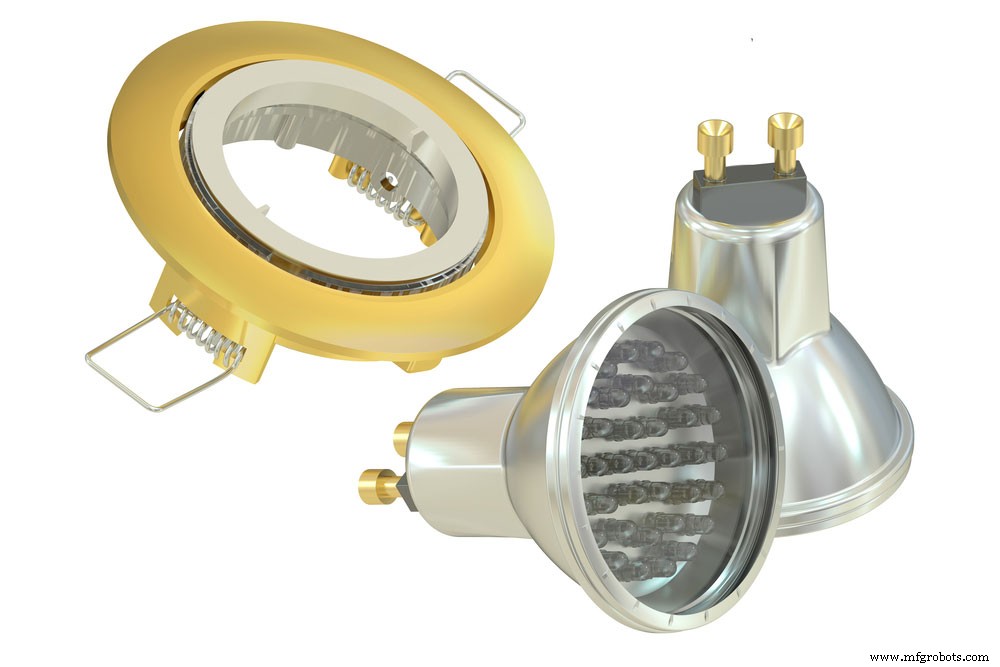
larga duración Lámpara empotrable con lámparas LED (Light Emitting Diode)
"LED" es un acrónimo de "diodo emisor de luz", que es una tecnología de semiconductores que convierte la electricidad en luz. Un LED es un tipo específico de diodo que emite luz visible cuando lo atraviesa una corriente eléctrica.
La iluminación LED solo ha estado en el mercado durante unas pocas décadas. La gente creó la iluminación LED Rudimental por primera vez en la década de 1960, aproximadamente 100 años después de que apareciera la primera bombilla. En la década de 1970, los LED estuvieron disponibles para su uso en dispositivos electrónicos como calculadoras y relojes. Pero no fue hasta mediados de la década de 2000 que la iluminación LED se volvió económica y se usó comúnmente en aplicaciones de iluminación general.
En un diodo de unión PN, los electrones y los huecos se recombinan en la unión PN para liberar energía en forma de luz (fotón) cuando se usa voltaje en la dirección directa. El color de la luz emitida por un LED depende de los materiales utilizados para crear la unión PN.
El color de un LED suele ser monocromático, lo que significa que tiene un solo tono y depende de la banda prohibida de energía en el semiconductor.
El símbolo eléctrico de un LED
El símbolo del circuito LED es fácil de entender. El símbolo LED incluye un símbolo de diodo con dos flechas que apuntan hacia afuera, lo que indica que la luz emana del dispositivo.
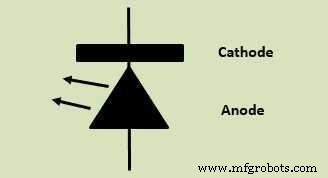
Símbolo del circuito LED
Cuando se muestra el símbolo del diodo emisor de luz solo como un contorno y sin los formularios completos, generalmente es una pista de que no debe usarlos con ácido. El formulario de esquema también es aceptable.
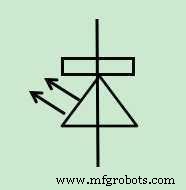
Alternativa de diodos emisores de luz, símbolo de circuito LED
El exterior de la placa de circuito y otros componentes también pueden presentar símbolos LED. El símbolo del diodo emisor de luz ocasionalmente está rodeado de círculos. Aunque esta señal ya no es tan popular, puedes verla en muchos circuitos.
Características del LED (diodo emisor de luz)
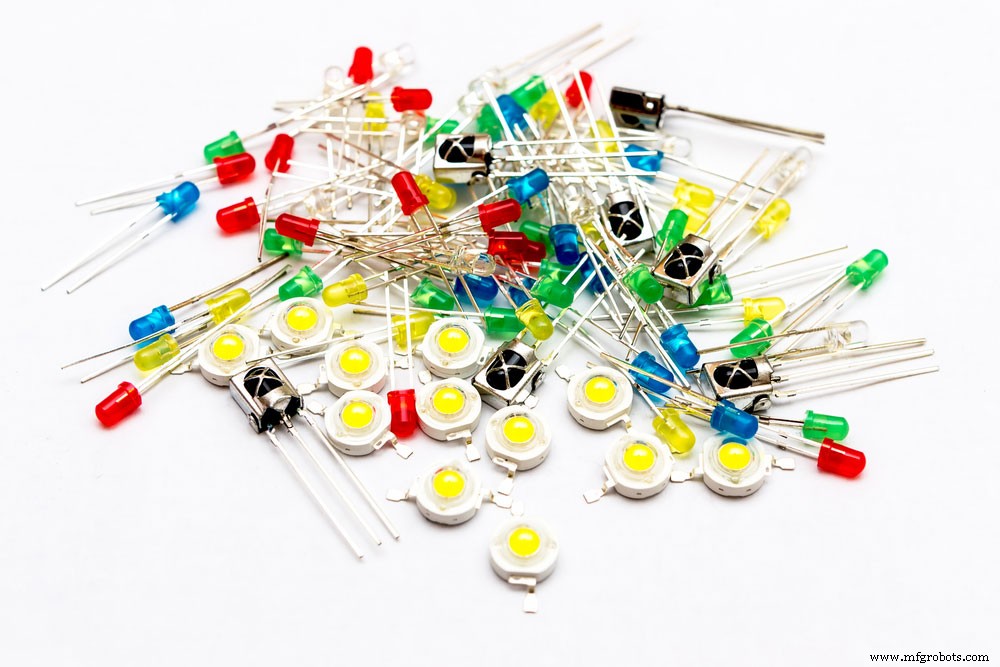
Pila de diodos emisores de luz y receptores de infrarrojos multicolores de 3 mmq y 1 W
Hay algunas características del LED que debe tener en cuenta antes de conectar un LED a un circuito y utilizarlo. Estas características son el voltaje directo (Vf), la corriente directa (If) y la polaridad del LED.
Voltaje directo de LED
Es otro término para la clasificación de voltaje, que es la cantidad de energía que puede usar el LED. Además, es la cantidad de voltaje para que el LED conduzca electricidad. Por ejemplo, todos los LED de 5 mm tienen una corriente nominal de 20 mA, pero los voltajes directos difieren de uno a otro.
Los LED de diferentes colores tienen clasificaciones de voltaje máximo ligeramente diferentes. La clasificación de voltaje máximo para los LED es de 3,2 voltios, mientras que la clasificación de voltaje máximo para los LED rojos es de 2,2 voltios, los LED azules son de 3,4 voltios y los LED blancos de 3,6 voltios (los LED con voltajes más altos requieren más amperaje).
Corriente directa de LED
La fuente de alimentación para los LED es una batería de 12 V CC, que debe recargar cada 100-150 horas, según el tipo de LED. Debido a que los LED son dispositivos sensibles y la cantidad de corriente que fluye a través de ellos es vital, es crucial asegurarse de que se conecten correctamente.
El brillo de un LED también depende de la cantidad de corriente que pasa por él. Demasiada corriente destruirá el LED, mientras que muy poca corriente atenuará el LED. La corriente directa máxima para un LED es de 20 mA.
Sin embargo, los diferentes colores de los LED tienen diferentes corrientes directas máximas. Por ejemplo, la corriente directa máxima para un LED rojo es de 30 mA, mientras que la corriente directa máxima para un LED azul es de 50 mA.
Polaridad del LED
La polaridad de un componente es una medida de simetría. Un diodo emisor de luz, como un diodo de unión PN, no es simétrico, lo que permite que la corriente fluya solo en una dirección.
La flecha en la imagen de arriba muestra la dirección del flujo de corriente convencional, de positivo a negativo. El cable más largo de un LED es siempre el cable positivo (ánodo).
El cable más corto es siempre el cable negativo (cátodo). Si invierte la polaridad de un LED, no se encenderá. Puede dañar un LED suministrando demasiada corriente, por lo que es importante usar una resistencia en serie con el LED.
Cuando un LED tiene polarización directa (es decir, cuando aplica voltaje al ánodo con respecto al cátodo), los electrones pueden recombinarse con los agujeros dentro del dispositivo, liberando energía en forma de fotones. Este efecto es la electroluminiscencia, y el color de la luz (correspondiente a la energía de los fotones) depende de la banda prohibida del semiconductor.
¿Cómo funcionan las luces LED?
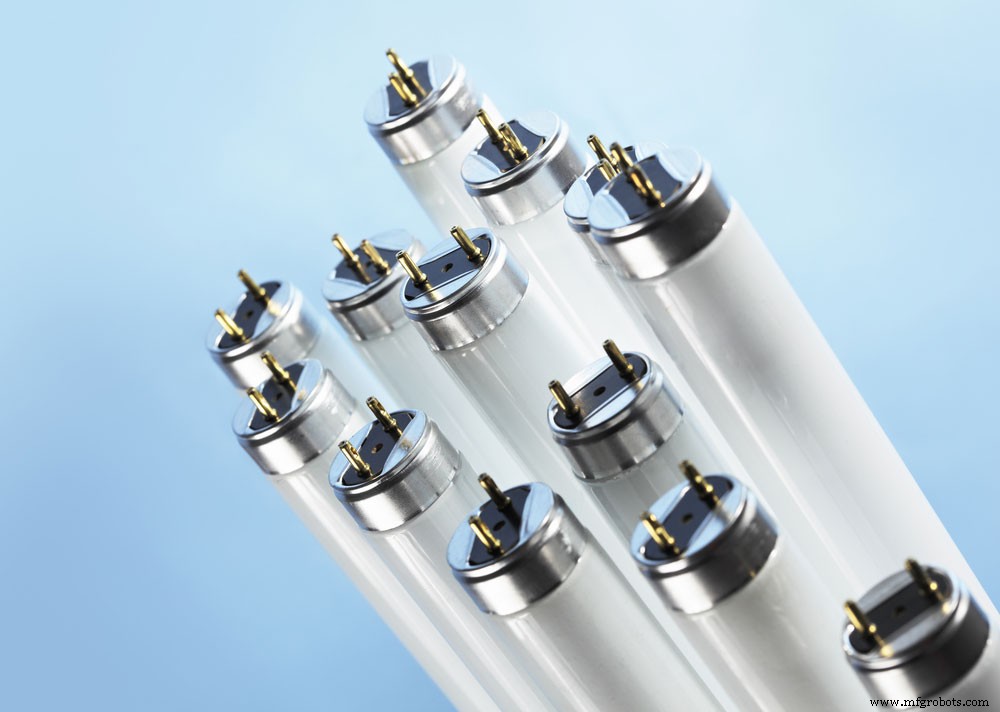
tubos fluorescentes, LED normales sobre fondo azul
Los diodos emisores de luz (LED) son un tipo de dispositivo semiconductor que convierte la energía eléctrica en luz visible. Los LED están compuestos por un material llamado semiconductor, que es una sustancia que puede conducir la electricidad. Los dos tipos de materiales utilizados para fabricar semiconductores son metales y no metales. El silicio y el germanio son ejemplos de no metales que la gente usa para fabricar semiconductores.
Cuando aplica energía eléctrica a un LED, los electrones dentro del dispositivo se recombinan con los agujeros dentro del dispositivo, liberando energía en forma de fotones. Este efecto es lo que llamamos electroluminiscencia, y el color de la luz (correspondiente a la energía de los fotones) depende de la banda prohibida del semiconductor.
¿Cuáles son los diferentes tipos de iluminación LED?
Los dos tipos principales de iluminación LED son los LED tradicionales y los LED orgánicos (OLED). Aquí está la lista de tipos de LED:
LED de diodo montado en superficie (SMD)
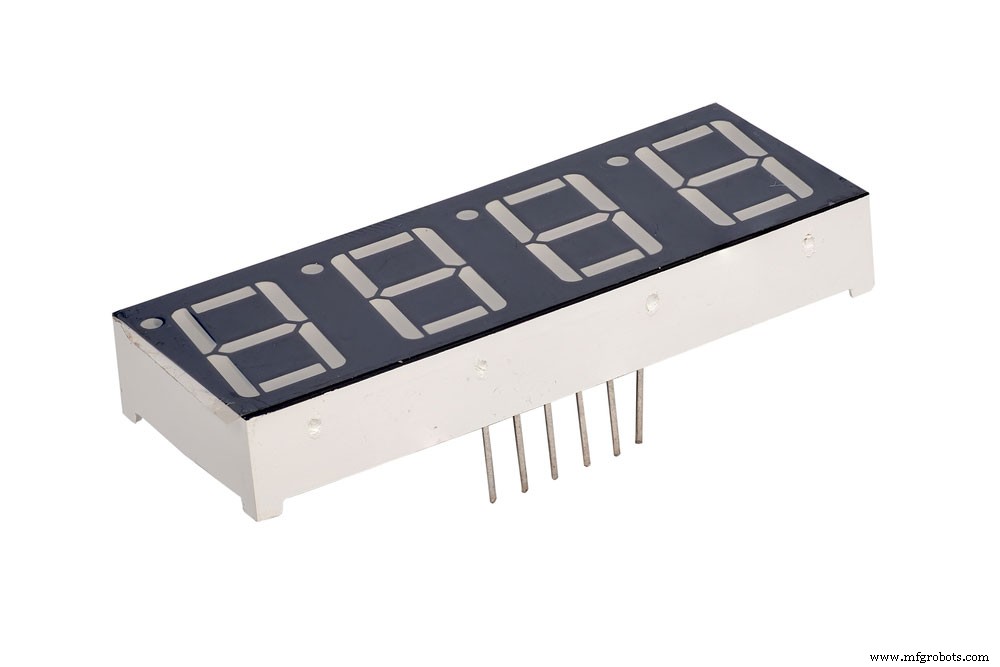
Dígito binario de 7 segmentos montado en superficie sobre fondo blanco aislado
Estos se conectan a la placa PCB y se sueldan en su lugar, probablemente el tipo más frecuente de chip LED disponible. Los LED montados en superficie son más brillantes que sus primos de orificio pasante y tienen varias formas. Los tipos más comunes son los paquetes 3528 y 5050.
Los LED 3528 son más pequeños, usan menos corriente y no son tan brillantes como los 5050. A menudo se usan para retroiluminación o iluminación debajo de gabinetes donde el espacio es reducido y la disipación de calor no es tan importante.
Los LED 5050 son un poco más grandes con tres patas en lugar de dos, lo que les permite disipar el calor mejor que los métodos de iluminación tradicionales de una bombilla estándar. Eso los hace más versátiles, ya que pueden estar disponibles para aplicaciones de alta potencia, como faros de automóviles u otros dispositivos de montaje en superficie de mayor salida de luz.
LED de orificio pasante
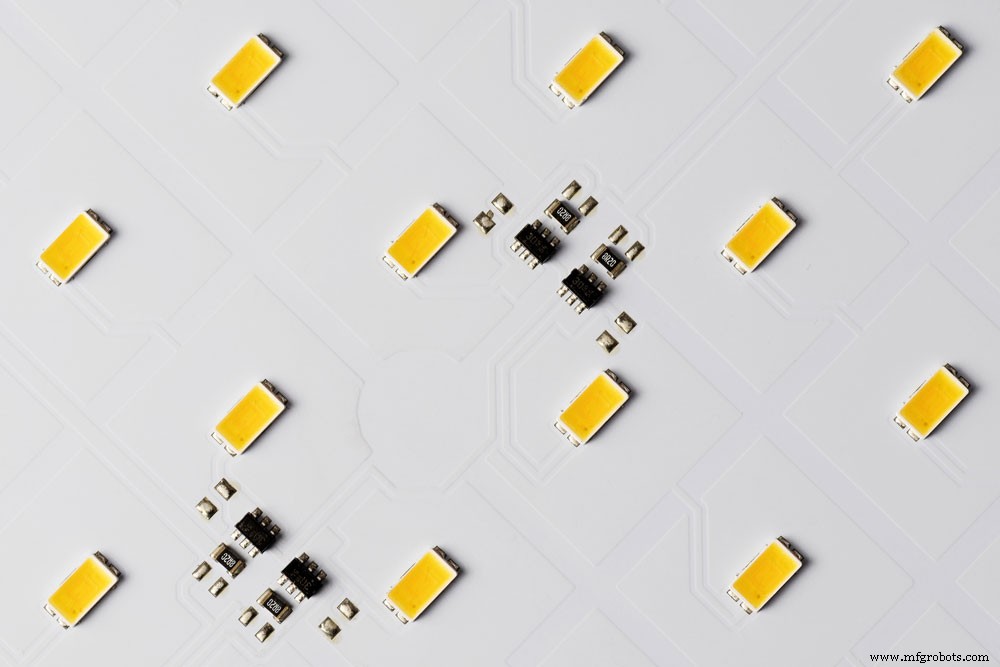
Vista superior de aluminio blanco circuitos electrónicos con LEDs SMD y microchips.
Los LED vienen en varias formas y tamaños, siendo los más populares de 3 mm, 5 mm y 8 mm. Los LED están disponibles en varios tonos, incluidos rojo, azul, amarillo, verde y blanco.
LED de chip a bordo (COB)
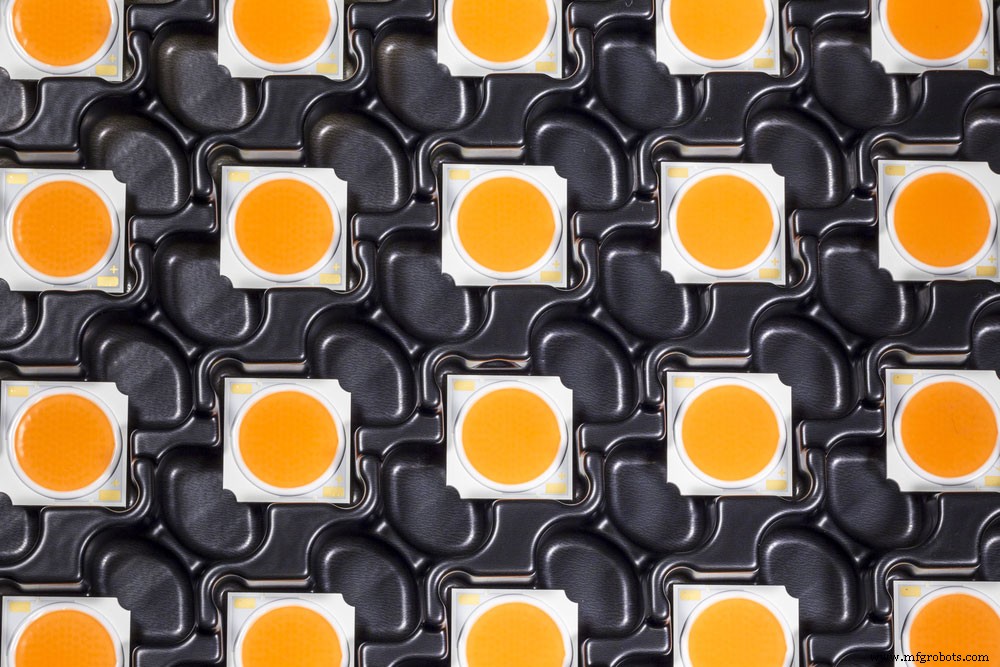
LED COB en bandejas portadoras negras
El COB es un tipo de chip integrado que produce un haz de luz de control más potente que el SMD. Además, tiene una opción más fácil porque la gente lo diseña para que emita luz en una dirección específica.
LED bicolor y LED tricolor
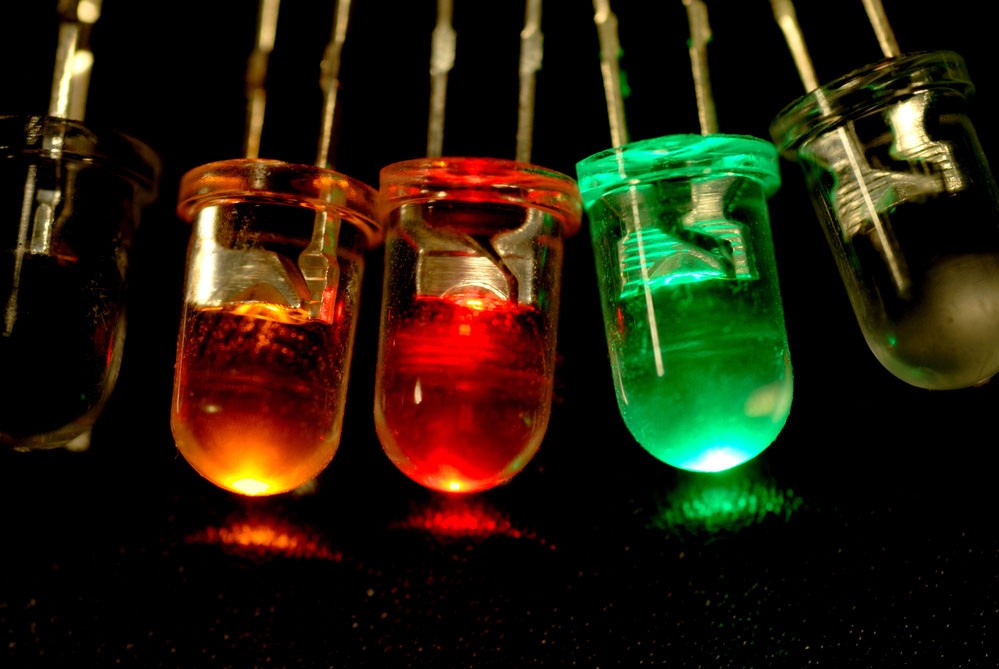
LED de colores
Estos tipos de LED tienen dos o tres colores en un LED. Los LED bicolores tienen rojo y verde, mientras que los LED tricolores tienen rojo, verde y azul. A menudo los usamos como indicadores de estado, ya que pueden emitir diferentes colores según el voltaje que les apliques.
LED de alta potencia
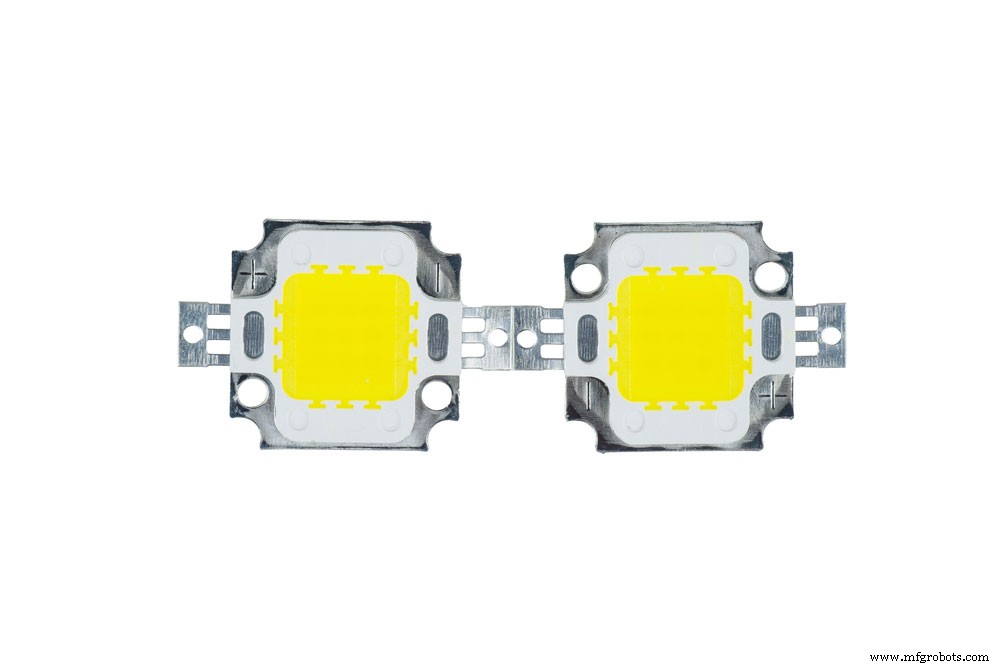
Dos LED de iluminación blanca SMD de alta potencia están aislados en un fondo blanco.
Por lo general, medimos la cantidad de energía que un LED puede disipar en vatios. Estas son buenas linternas con LED. Incluso puede usarlos para crear focos y faros de automóviles usando sus matrices. Debido a que pasa tanta energía a través del LED, casi siempre necesitan disipadores de calor. Los disipadores de calor son trozos de metal con una gran superficie que puede usar para ayudar a disipar el calor de la luz LED.
LED de paquete doble en línea (DIP)
Los chips LED DIP son los LED originales, ya que muchas personas los recuerdan cuando escuchan el término "luces LED". Los chips LED DIP, si bien son más antiguos que sus contrapartes más jóvenes, todavía se usan en la actualidad y existen más comúnmente en dispositivos incorporados debido a su pequeño tamaño. A pesar de esto, no son muy brillantes y solo pueden producir una cantidad limitada de luz.
LED RGB (LED rojo, azul y verde)
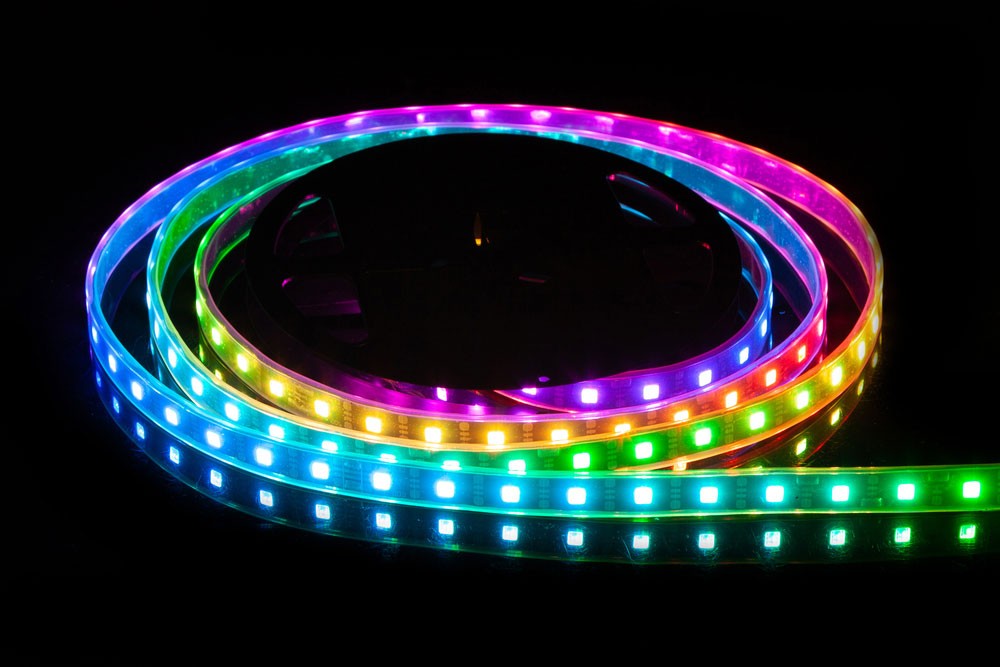
Tira de LED RGB en bobina con fondo negro
Los LED RGB comprenden tres LED individuales enganchados entre sí. Pero eso no implica que solo puedan producir tres colores. Puede modificar la intensidad de cada color para crear todos los tonos del arcoíris porque el rojo, el verde y el azul son colores aditivos primarios. Los LED RGB tienen cuatro terminales:uno para cada color, así como un pin compartido.
Reguladores de intensidad
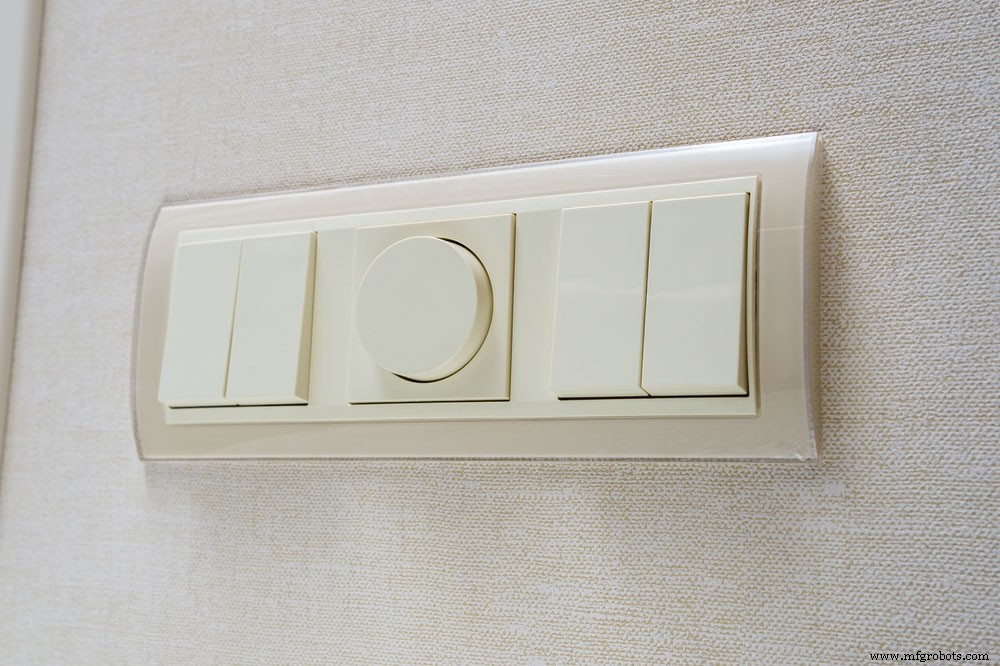
Interruptores con dimmer de la colección de pared
Al igual que otros tipos de luces, también puede encontrar reguladores de intensidad para sus luces LED. Estos tipos de interruptores controlan la cantidad de energía que fluye hacia las bombillas.
En comparación con los interruptores de atenuación de las bombillas LED, el interruptor de atenuación de las bombillas incandescentes estándar no funciona de manera efectiva.
Como resultado, alguien sugiere que las bombillas tradicionales deberían reemplazarse por LED, ya que consumen menos electricidad que otros tipos de bombillas.
LED orgánico
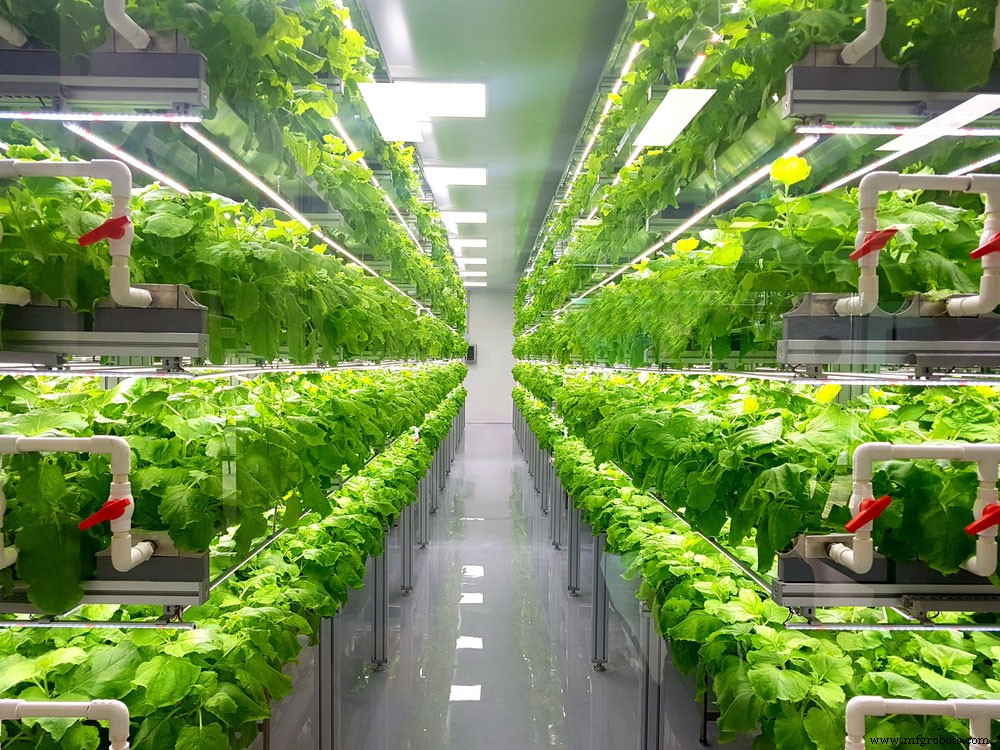
Las plantas en granjas verticales crecen con Luces LED producidas por luz.
El concepto básico detrás de los LED orgánicos son los diodos emisores de luz. El LED, como su nombre lo indica, contiene componentes orgánicos. El diodo emisor de luz fundamental emite luz desde las uniones PN específicas que son el foco de atención. Los LED orgánicos existen en láminas delgadas y producen un brillo difuso.
Es más a menudo una sustancia de película delgada depositada sobre el sustrato de vidrio. Luego, transmite los impulsos eléctricos a través de componentes semiconductores a los píxeles integrados, lo que hace que el LED brille. La tecnología LED continúa desarrollándose a una velocidad vertiginosa, tanto en eficiencia como en complejidad, y no existen límites para su aplicación en ningún campo.
LED de grafeno
A fines de 2015, el popular canal BBC anunció que el desarrollo de la luz empleará filamento LED recubierto de grafeno. Es más eficiente que las bombillas típicas y pretende ahorrar a los usuarios alrededor de un 10 % en sus facturas de energía. El uso del grafeno fue desarrollado por primera vez por un científico que trabajaba en la Universidad de Manchester. La competencia ahora está en progreso y ayuda a descubrir usos inventivos para materiales duraderos.
LED de brillo máximo
El término LED de alta intensidad se refiere a los diodos emisores de luz LED inorgánicos (a menudo abreviados como ILED). En el campo de la iluminación y la decoración, ya se ha utilizado este tipo de LED. Sin embargo, no fue hasta principios de la década de 2010 que los LED inorgánicos se volvieron lo suficientemente potentes para fines de iluminación general. Los LED de alta intensidad también se utilizan como reemplazo de las fuentes de luz tradicionales, como las lámparas incandescentes y fluorescentes. Estos tipos de LED tienen una larga vida útil y ahorran energía.
LED de colores
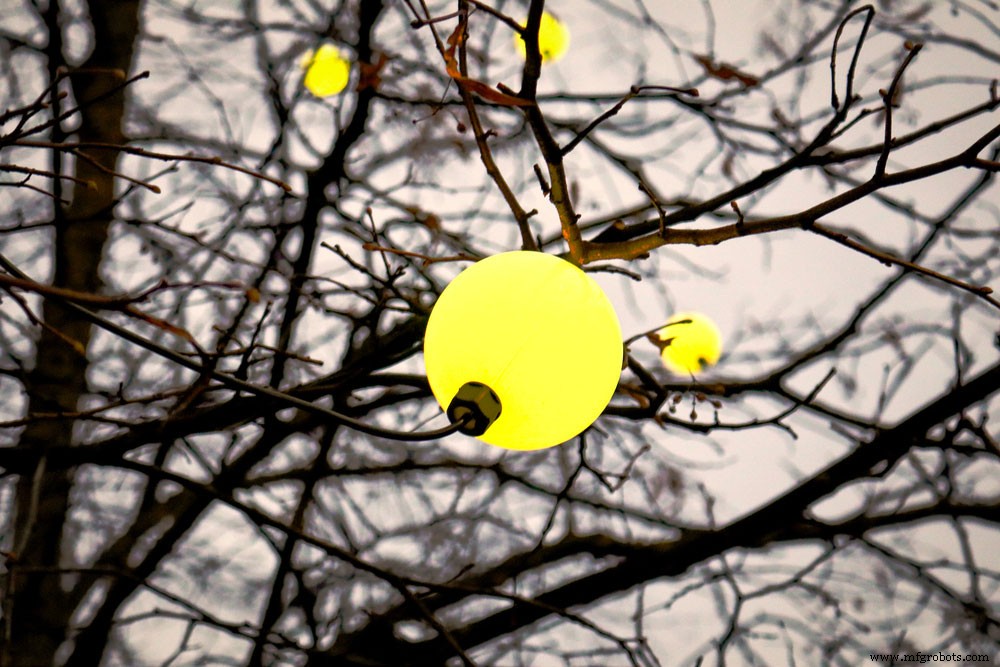
Bombilla amarilla esférica que cuelga de la rama de un árbol en el árbol sin hojas y fondo sepia del cielo nocturno
El LED de color atrae la atención de todos y está disponible en tres tonos:LED blanco frío, LED blanco cálido y LED de luz diurna. Las bombillas halógenas de color blanco cálido son la opción más popular para la iluminación interior. El tono azul pálido del LED diurno, que tiene una base blanca intensa con un toque de azul, se activa principalmente para resaltar el tono real.
LED con circuitos integrados
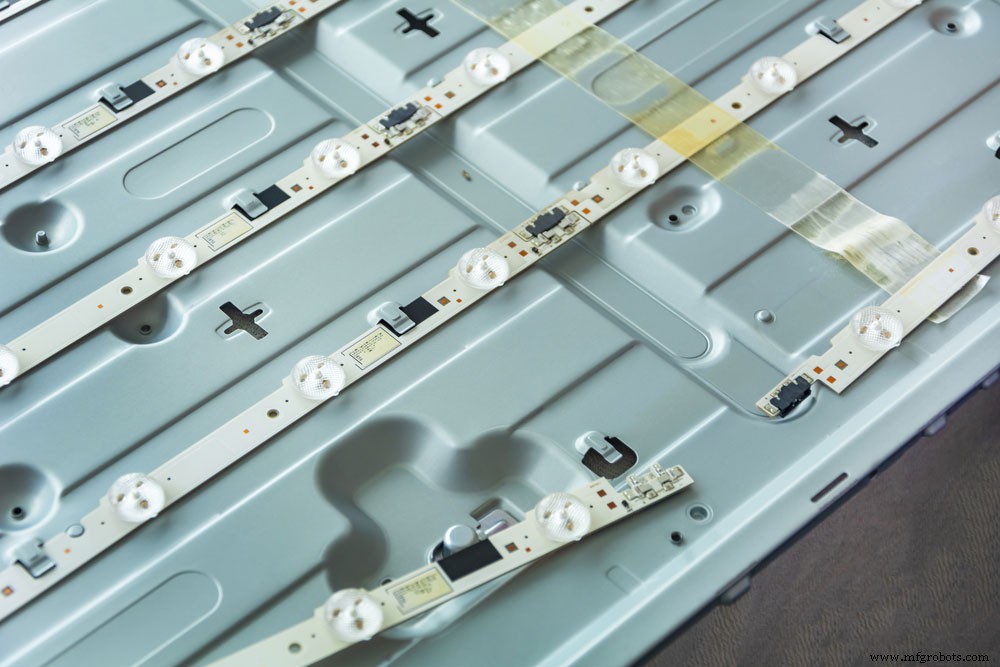
Primer plano de placa de circuito LED en televisor LED
-LED direccionables
También puede programar LED individualmente con diferentes longitudes de onda. Los LED individuales se pueden controlar con diferentes conjuntos de chips (WS2812, APA102 y UCS1903) que tienen diversos grados de control de color.
LED de ciclismo
Los LED no son todos iguales. Tome el LED de ciclismo, por ejemplo. Hay un circuito integrado en estos LED que les permite parpadear sin utilizar una fuente de alimentación externa.
-Resistencia incorporada
Los LED con una pequeña resistencia limitadora de corriente también son LED con resistencias integradas. Hay un pequeño IC cuadrado negro en la publicación para limitar la corriente en estos LED. ¡Así que encienda su fuente de alimentación y encienda el LED con una resistencia incorporada!
LED especiales
-LED infrarrojos
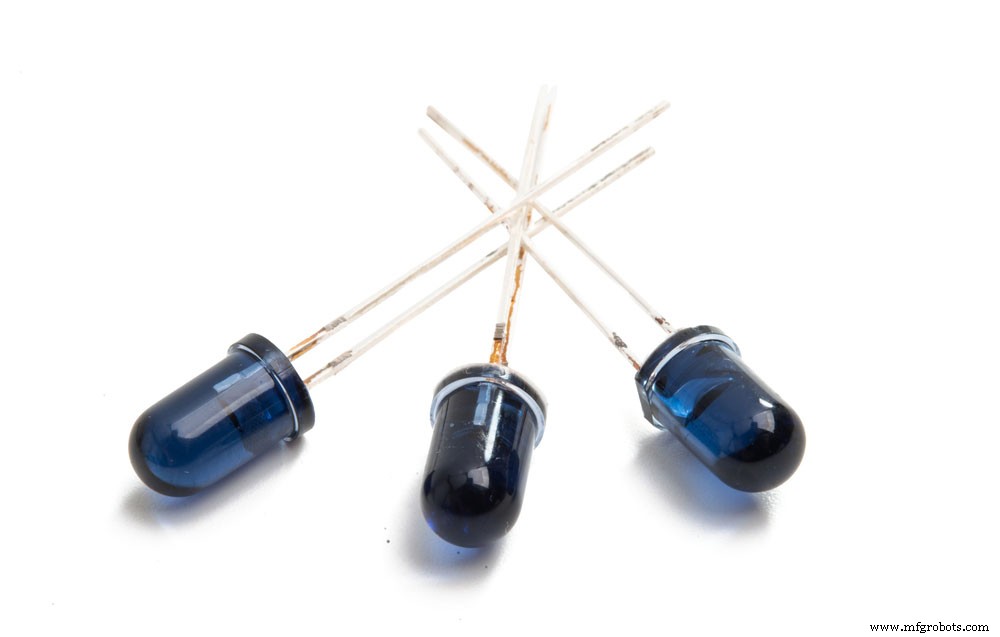
Los LED infrarrojos están aislados en un fondo blanco.
Hay LED que emiten luz fuera del espectro visible. Los LED infrarrojos, por ejemplo, son bastante comunes. ¡Puede utilizarlos en los controles remotos de televisión para transmitir pequeños fragmentos de información a través de una luz invisible! Estos pueden parecerse a los LED normales, por lo que será difícil distinguirlos.
-LED ultravioleta
También puede obtener LED UV en el extremo inferior del espectro. Los LED ultravioleta harán que ciertos materiales emitan fluorescencia, ¡como una luz negra! They’re also useful for disinfecting surfaces because many germs are sensitive to UV light. You may utilize them in counterfeit detection credit cards, papers, and so on.
Mini LEDs
The basic purpose of these tiny LEDs is to decorate. There may be a chain of little LED lights or separate to use. They come in a variety of hues.
The most essential aspect of mini LED lights is their tiny size, which is why they’re available in automobiles and other places where space efficiency is required.
Alphanumeric LEDs
Alphanumeric LEDs come in seven-segment, starburst, and dot-matrix forms. The seven-segment variety can display all digits as well as a restricted number of letters.
All letters may appear on Starburst displays. In the case of dot-matrix displays, it represents each character by 5 x 7 pixels. The popularity of seven-segment LED displays waned in the 1970s and 1980s as liquid crystal displays with reduced energy requirements and greater display flexibility increased.
Flashing LEDs
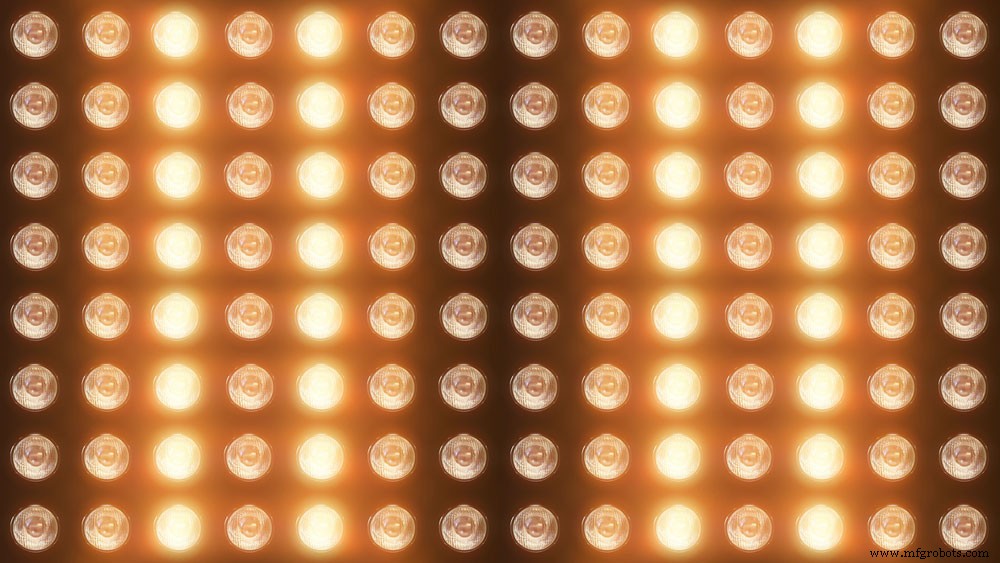
3D rendering of a wall with flashing lights and bright spotlights.
LEDs that are constantly on can be used as attention-seeking signals without the need for an external device. Flashing LEDs look like ordinary LEDs but include a built-in voltage regulator and multivibrator circuit, allowing them to flash with a one-second rhythm.
When viewed in a diffused lens LED, this circuit appears as a tiny black spot. The majority of flashing LEDs give off one color of light, although more advanced devices can flash between colors and even fade through colors in an order using RGB color mixing.
Simple LED Circuit
There are several interesting LED Circuit Project ideas to explore.
Such as LED Pilot Ligh, LED Battery Tester, LED Nightlight, led display, and more.
You may need the materials like led tubes/ led bulbs.
For additional basic LED Circuits, please see here.
The benefits of using LED lights over traditional light bulbs
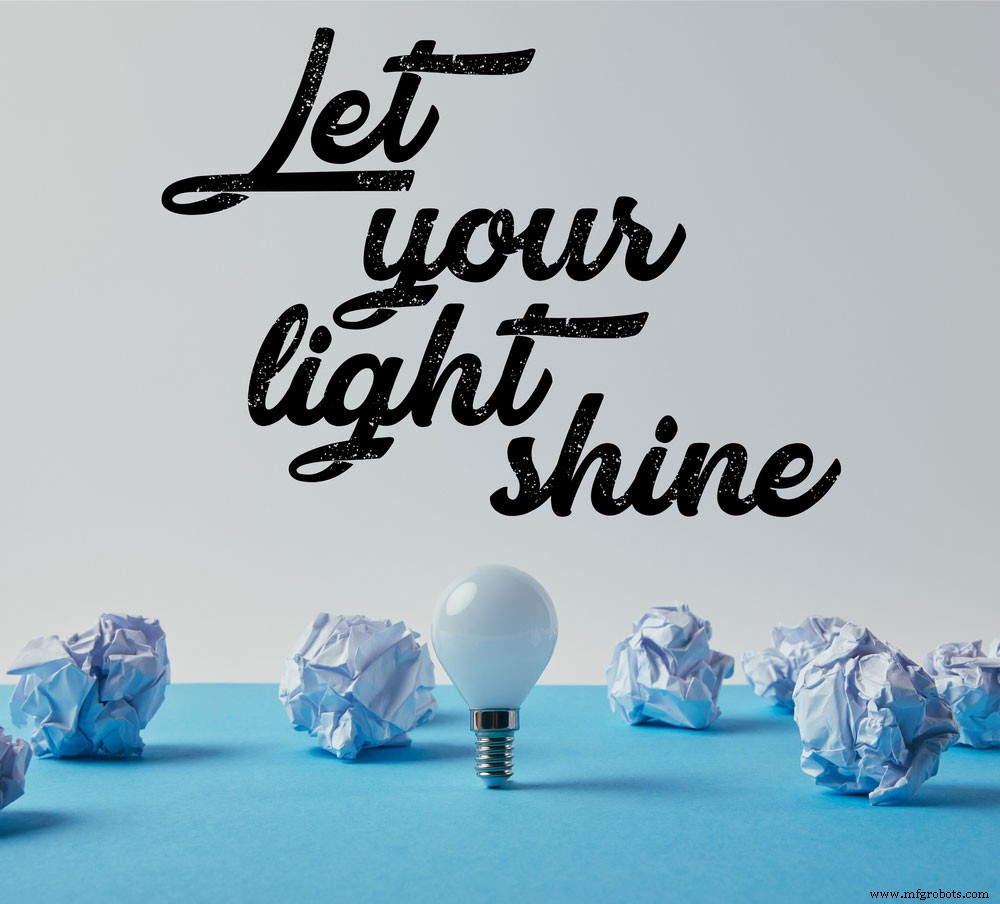
led to light bulbs with crumpled papers on the blue surface
LED lights have a number of advantages for industrial and commercial enterprises that want to lower their power consumption and costs. Here are some of the benefits of LED lights.
Lower power consumption
LEDs are more efficient than incandescents because they produce light in large with relatively little energy.
LEDs convert over 70% of the electricity they consume into light, which is far better than other bulbs that waste a lot of power by converting it to heat. A 6-watt LED bulb can create the same amount of illumination as a 40-watt incandescent.
In addition to saving money on your energy bills, LEDs also last a lot longer than traditional light bulbs. So you could save both your electricity bills and get an energy-saving lifestyle in the domestic lighting.
Long life
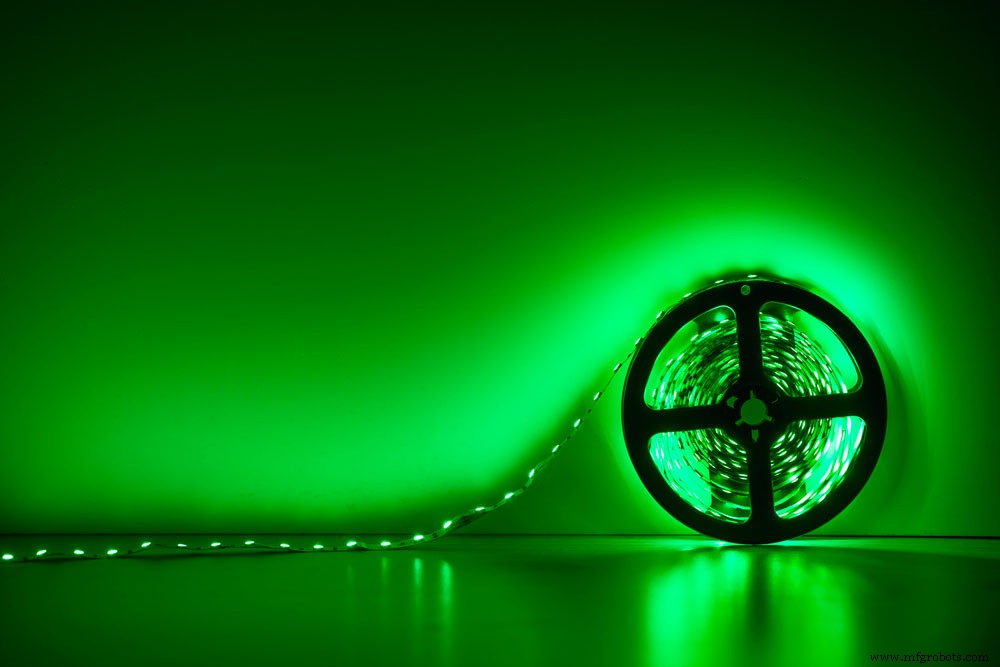
Led strip green light roll with cool light
The life expectancy of an LED light is far greater than that of a regular incandescent bulb. The typical incandescent bulb lasts around 1,000 hours. An average LED light has a lifespan of 50,000 hours. It’s possible for an LED light to endure anywhere from six to 12 years, depending on how you utilize it. This compares extremely favorably against traditional led light bulbs.
A wide color palette
Incandescent bulbs need gels or filters to create different hues and tones of light. LEDs, on the other hand, provide a wider range of colors and color temperatures without the need for gels or filters, which might burn out or fade over time. The color of the emitted light gets changed in LEDs by changing the actual diode ( or material) used.
This is important to consider if you’re using LEDs for specific tasks like growing plants indoors because different colors of light can affect plant growth. For example, blue light helps plants grow taller, while red light helps them produce more flowers.
Eco-friendly
LEDs are eco-friendly in multiple ways. They don’t contain harmful materials like mercury found in CFLs. They also don’t produce UV rays or release toxic chemicals into the air as HIDs do.
In addition, LEDs are recyclable, so once they’ve reached the end of their lifespan, you can recycle them instead of throwing them away.
Design Flexibility
Another advantage of LEDs is that they come in various shapes and sizes. This gives you more design flexibility when choosing led lighting for your home or business.
For example, you can find LED bulbs that look like traditional incandescent bulbs, as well as ones that look like CFLs and HIDs. You can also find LED bulbs with different types of bases, such as E26, E12, and GU24.
High brightness and intensity
LEDs also have high brightness and intensity. This means that they can provide better lighting for your home or business than other types of standard bulbs.
Dimming Capabilities
You can use LEDs at power levels ranging from 5% to 100%, with a success rate of over 90%. Some lighting technologies, such as metal halide, can only be dimmed at a power level of 20% to 50%.
And the dimmer switch may help you whether you want white light or warm white.
Directionality
LEDs, unlike incandescent bulbs, don’t distribute their light in all directions. This helps to minimize energy consumption since no light is lost or trapped inside reflectors and diffusers, which can retain approximately half of the generating light from exiting the bulb. LEDs are great for applications like task lighting and recessed downlights because of their directional light output.
No Heat or UV Emissions
If you’ve ever attempted to change a dull incandescent light bulb after it has fallen out, you know how hot they get when they’re in use. Traditional lighting sources, such as incandescent bulbs, turn more than 90% of the energy they consume into heat while only utilizing 10% for illumination.
LED lights emit very little heat when turned on, making them much safer to the touch.
Additionally, LED bulbs don’t give off ultraviolet (UV) radiation like some types of lighting, such as mercury vapor lamps. This means that they won’t cause fading of fabrics or artwork and can be available in enclosed spaces without fear of UV damage.
light-emitting diodes:How to install LED lights
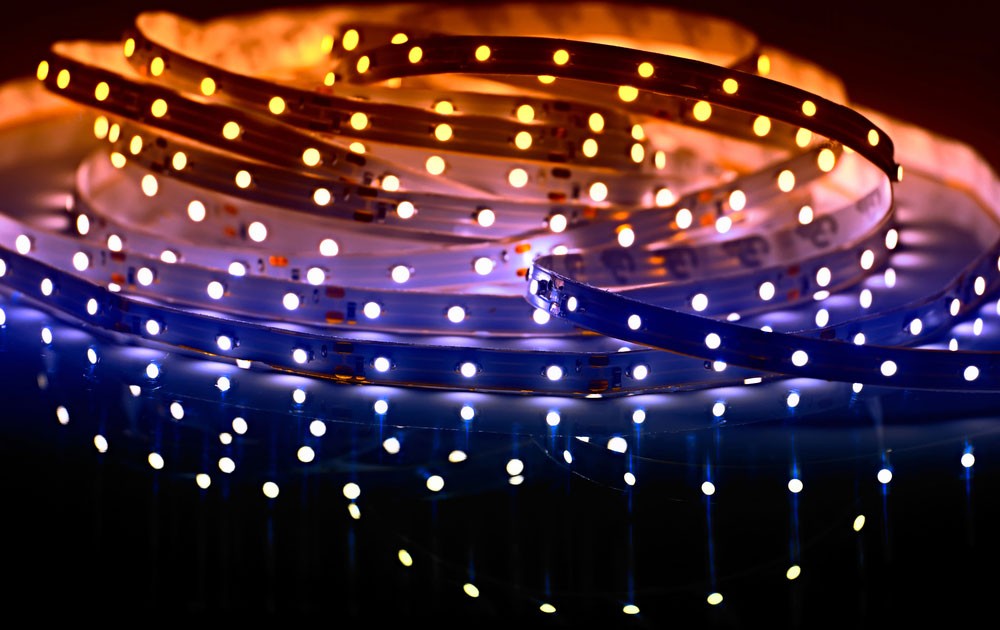
Led strip coil on dark background. Led shining diodes
Installing LED lights may seem like a daunting task, but with a few simple steps, you’ll be on your way to energy-efficient lighting in no time.
First, determine where you want to install the LED lights.
Second, gather the necessary tools and materials.
Third, follow the instructions below.
Installing LED strip lights is a fairly simple process that anyone can do without too much trouble. The first step is to find a suitable location for the lights. You’ll need to consider both the power supply and the layout of the room when choosing a location.
Once you’ve found a good spot, the next step is to gather your tools and materials. You’ll need a drill, screwdriver, wire strippers, and other basic tools. You’ll also need a power supply, LED strip lights, and connectors.
The last step is to follow the instructions for your LED strip lights. This will vary depending on the brand and model of lights you’re using. But in general, you’ll need to connect the power supply to the lights, then use the provided brackets to mount the lights in your chosen location.
If you’re looking for a more permanent solution, you can also solder the LED strip lights directly to the power supply. This will give you a stronger connection, but it’s not necessary for most projects.
The different types of LED lights available on the market
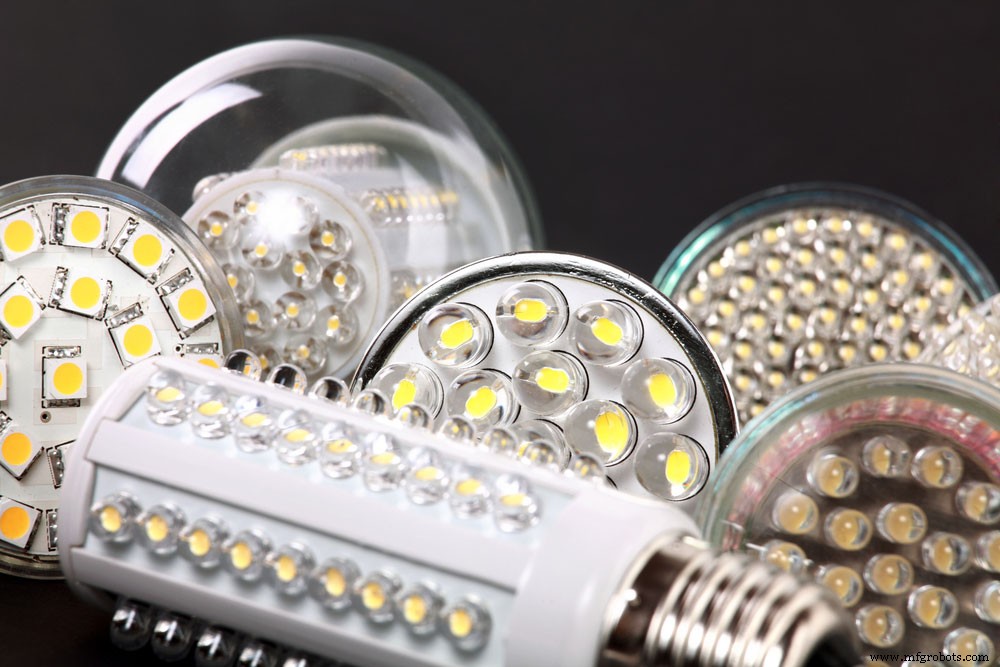
Types of LEDs:Newest LED light bulbs on black background
What is the best type of LED? One of the most common types of LEDs is the standard LED, which is a small, round bulb that can be useful in a variety of applications. Standard LEDs are available in a wide range of colors, including white, blue, green, and red.
Another type of LED is the high-powered LED, which is larger and brighter than a standard LED. High-powered LEDs often appear in outdoor applications, such as street lights and wall sconces.
LED strips are another type of LED that is becoming increasingly popular. LED strips are long; you can use thin strips of LEDs to add accent lighting to a room or provide task lighting under cabinets.
Finally, LED light bulbs are a type of LED that is available to replace traditional incandescent bulbs. LED bulbs are available in various shapes and sizes, and they can be accessible for both indoor and outdoor applications.
How Are LEDs Different than Other Lights?

Types of LEDs:street lights
There are a few key ways that LEDs are different than other types of lights. Such as:
Heat
The advantages of LED lighting are numerous, but the main one is that it is more energy-saving than other types of lighting. Incandescent bulbs generate 90% of their energy as heat, while CFLs generate about 80% of their energy as heat. LEDs, on the other hand, generate very little heat.
Light Source
LEDs are about as big as a grain of sea salt, and their numbers are tiny, comparable to a pinch of sea salt. The light source is from a semiconductor comprising two materials joined together.
Directional
The direction emitted by LEDs is what makes these types of lights so different. It emits light in a specific direction, which reduces the need for reflectors and diffusers—these are what trap the light. Other types of lighting, reflecting its light in a certain direction, causes much-wasted light and may never even leave the fixture.
How to choose the right LED light bulbs for your needs.

Types of LEDs:How to choose
Before buying LED lights, there are a few things and variables to consider.
Types of LED:Make a list

Types of LED:The person filling out a to-do list
Count the amount and kind of light fixtures in your house.
How much are you willing and able to spend on LED lights? You may be able to find some good quality, affordable options if you take the time to look around.
Determine the types of light bulbs you need.
Not all rooms in your house will require the same light bulbs. Consider the function of each room when making your decision.
– For example, you may want brighter lights in the kitchen to see while you’re cooking.
– Or, you might prefer softer light in the living room to create a relaxing atmosphere.
Types of LED:Think about the color of light.
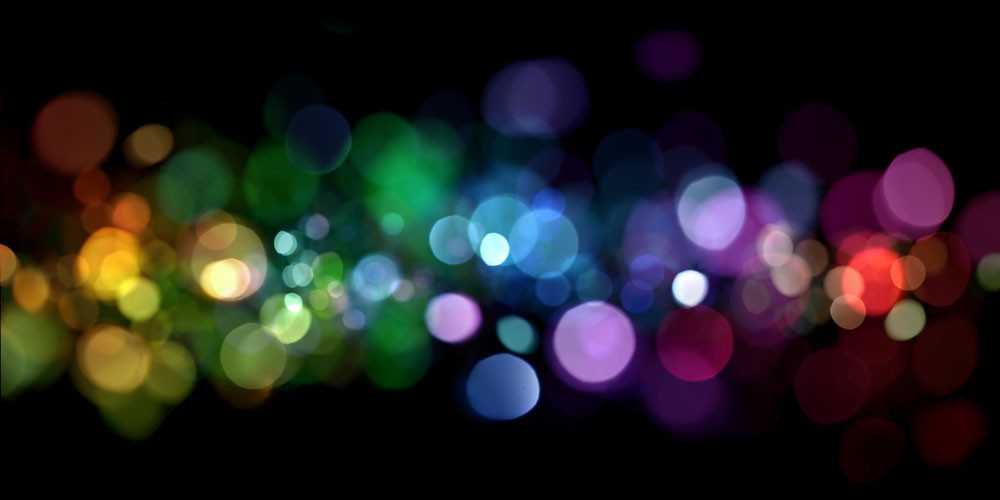
Types of LEDs:the color of light
What color of light do you want to illuminate your space?
White light is the most common, but you can also find LEDs in other colors like yellow, green, and blue.
Some people prefer a certain color of light for specific rooms in their house. For example, blue light might be calming in a bedroom, while white light could help you stay alert in a home or commercial lighting.
You should also consider the color temperature of the light.
-Measure this in Kelvin and it determines how warm or cool the light will appear.
– For example, a bulb with a color temperature of 2700K will emit a warm, yellow light, while one with a color temperature of 6000K will emit a cool, white light.
Brightness or Lumens
The brightness of an LED is important. You need to pick the proper brightness level based on your needs. If you have a little room, you’ll want a low brightness setting, but if you have a big space, you’ll need more light, which means high brightness LEDs ( inorganic LEDs).
The type of light you need to install at a location also influences the cost. The lumens measure the amount of light supplied by an LED in a unit time span. The number of fixtures you’ll need to install is up to the area’s size and how many people will be using it.
Type of LED Light
The first step is to determine the type of LED light you require. LED lights are available in various forms for various applications, with several different types of LED strip lights, tiny lights, halogen bulbs, and fixtures.
If you want to grow plants in your home using LED Grow Lights, you’ll need them. If you’re looking for tiny LED lights for decoration, get colorful mini-LEDs (white LEDs, blue LEDs) and cool light.
Types of LED:Calculate your financial and environmental savings
LEDs, like all other bulbs, come in a variety of shapes and sizes. They are one of the more costly bulb types available today; however recent advancements in LED technology have brought the price down. Many electric utility companies provide incentive programs to help you save money on the upfront cost of LEDs. LED lights are an investment, but they will save you money in the long run.
In addition to saving you money, LEDs are also more environmentally friendly than other bulbs. Besides, they are available in various sizes, shapes, and colors. You can even get mini-LEDs that are small enough.
Types of LED:Do LEDs need a Heat Sink?
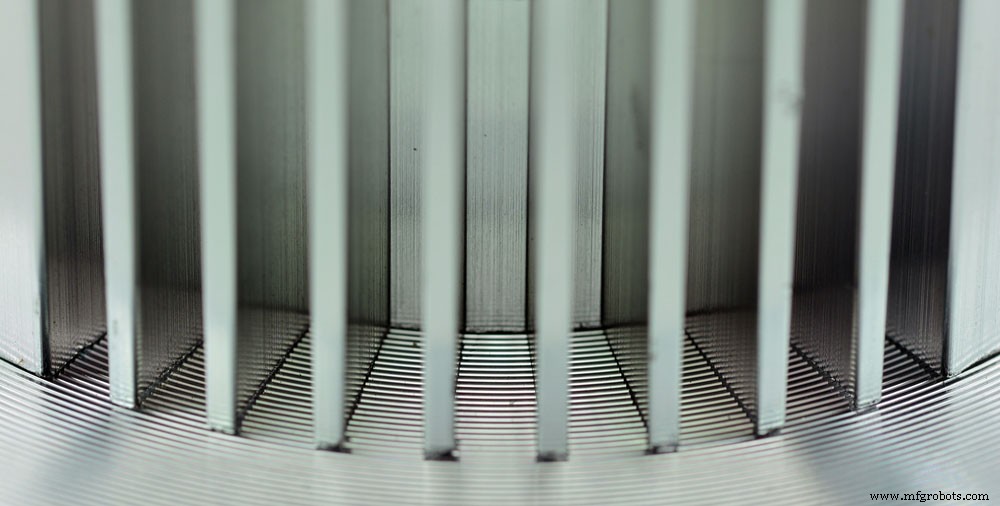
Types of LEDs:Detail of an aluminum heat sink from a led lamp for power dissipation
Sí. LED light strips require heat sinks or channels to remove the heat from them and disburse it back into the ambient air. LED strips will suffer rapid deterioration.
Resumen
LEDs come in all shapes and colors, making them a versatile lighting option for your next project. When choosing an LED, it’s important to consider the color, brightness, and viewing angle of the light. There are also different types of LEDs available, depending on your needs. We hope this post has given you a better understanding of the different types of LEDs available and how to choose the right one for your project. Are there any other questions you still have about LEDs? Let us know in the comments below!
Tecnología Industrial
- Cómo el corte por láser puede mejorar su próximo proyecto de fabricación
- 15 tipos diferentes de montacargas:la lista completa
- Diferentes tipos de uso de troqueles en la fabricación
- FR4:cuándo puedes usarlo y cuándo no
- Los diferentes tipos de mantenimiento en la fabricación
- ¿Cuáles son los diferentes tipos de doblado de tubos?
- ¿Cuáles son los diferentes tipos de trabajadores de mantenimiento?
- Ocho formas de garantizar la seguridad de su MacBook en lugares públicos
- Los beneficios de diseño que el corte por láser puede tener en su proyecto
- Los diferentes tipos de acero inoxidable
- ¿Cuáles son los diferentes tipos de soldadura?



